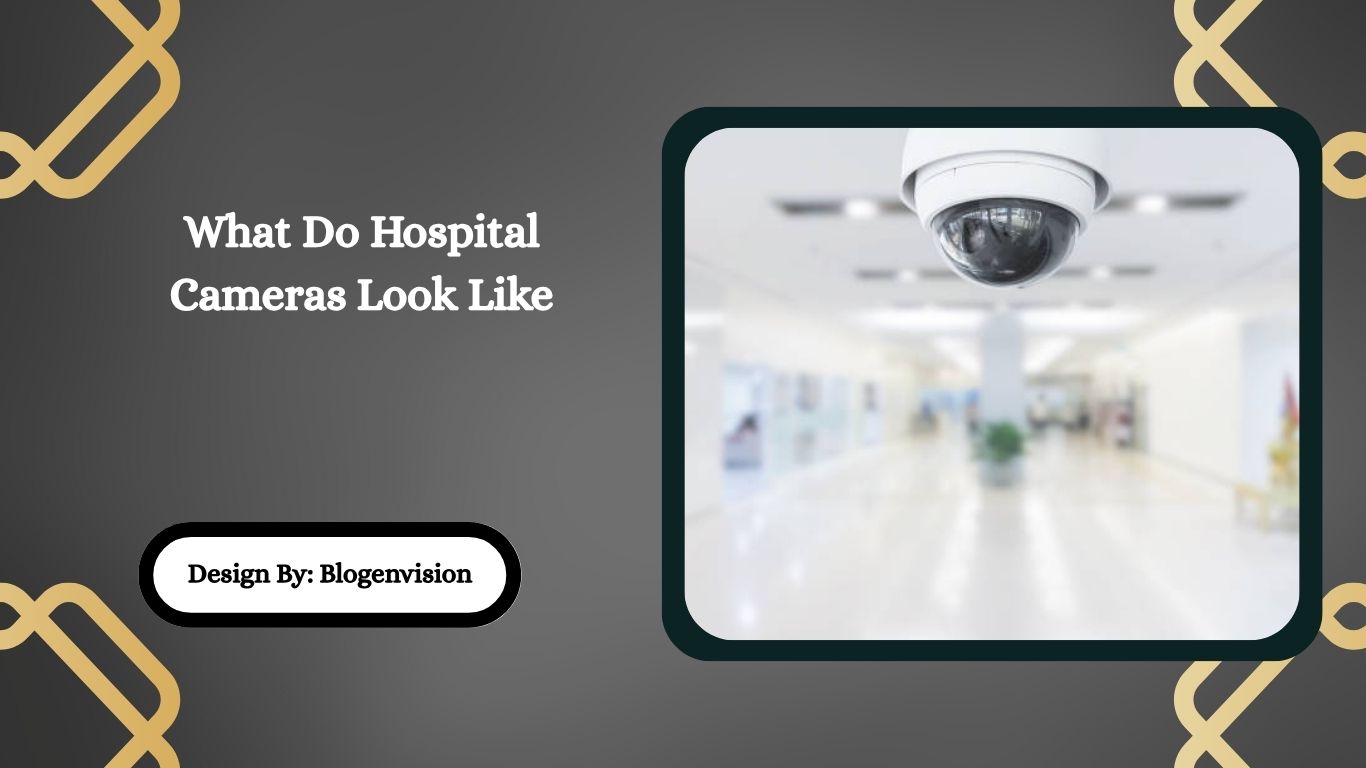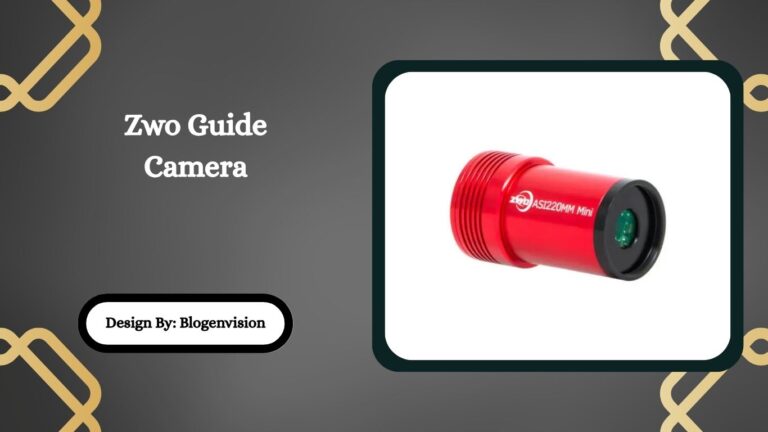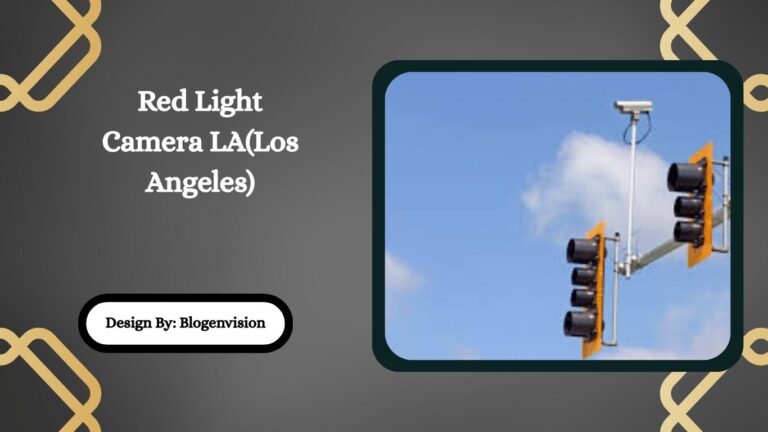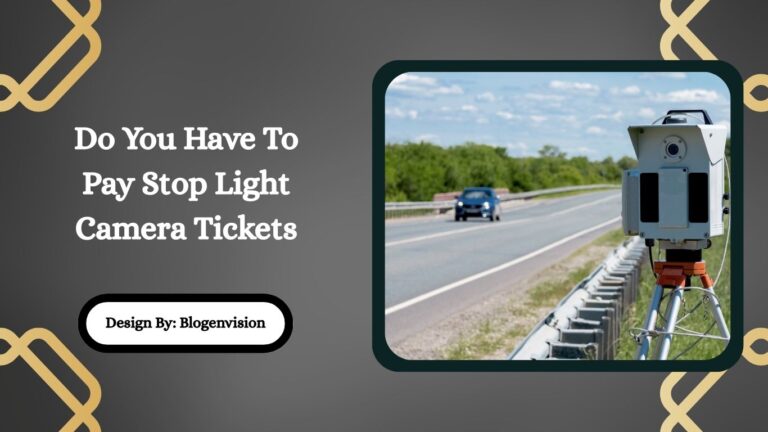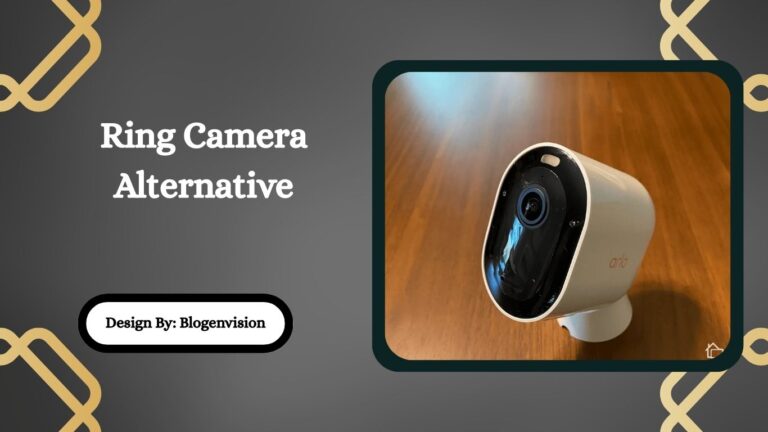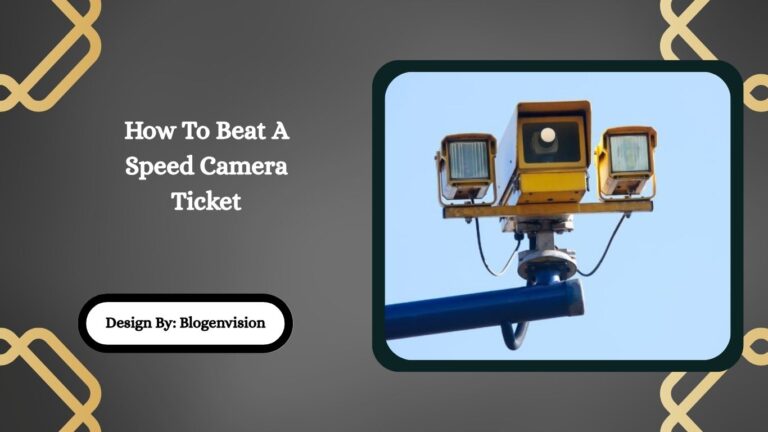What Do Hospital Cameras Look Like – Complete Guide!
Hospital cameras typically include dome, bullet, PTZ, hidden, and ceiling-mounted styles. Their appearance varies by location, providing discreet yet effective surveillance while respecting patient privacy and regulatory guidelines.
In today’s world, security and privacy are crucial in healthcare environments. One key element that helps maintain safety inside hospitals is the use of surveillance cameras. But what do hospital cameras look like? Are they obvious, hidden, small, or large?
This article provides a detailed look at hospital cameras — their appearance, types, common placements, and the role they play in protecting patients, staff, and property. If you’ve ever been curious about hospital surveillance or need insights for security system planning, this guide covers everything.
Do Hospitals Use Cameras?
Yes, hospitals widely use security cameras to monitor hallways, entrances, parking lots, restricted areas, and sometimes even patient care areas. These cameras help prevent theft, improve staff and patient safety, and provide evidence in case of disputes or incidents.
However, due to privacy regulations like HIPAA (Health Insurance Portability and Accountability Act) in the United States, cameras are typically not installed inside private patient rooms or examination areas unless for specific medical or legal reasons.
What Do Hospital Cameras Look Like?
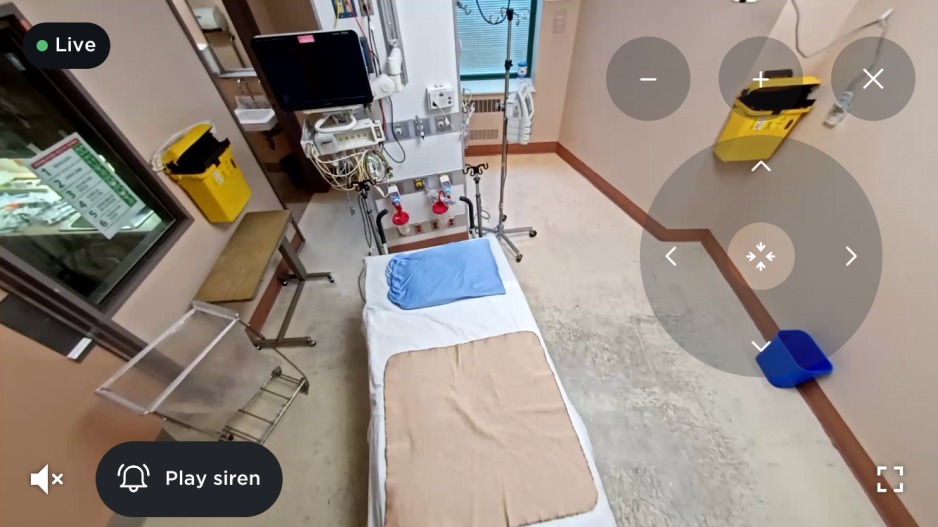
Hospital cameras come in different shapes and sizes depending on their location and purpose. Here are the most common types and how they look:
1. Dome Cameras
Appearance:
Dome cameras have a semi-spherical, dome-shaped cover, often mounted on ceilings. Their sleek, discreet design blends easily into hospital interiors.
Key Features:
- Small, rounded, and compact
- Often tinted or smoked to hide lens direction
- Provides 360-degree coverage
- Suitable for hallways, waiting areas, and nurse stations
Why Used in Hospitals:
Dome cameras are less noticeable, reducing patient anxiety while providing wide-angle monitoring.
2. Bullet Cameras
Appearance:
Bullet cameras have a long, cylindrical shape that resembles a tube or small flashlight. They are often mounted on walls or ceilings with a bracket.
Key Features:
- Visible, deterrent design
- Pointed in a fixed direction
- Weather-resistant models for outdoor use
- Ideal for entrances, parking areas, and building exteriors
Why Used in Hospitals:
Their visible design deters unauthorized entry and criminal activities, especially around hospital entrances and parking lots.
3. PTZ Cameras (Pan-Tilt-Zoom)
Appearance:
PTZ cameras are larger, motorized cameras enclosed in a dome or mounted on poles. They can rotate horizontally, tilt vertically, and zoom in.
Key Features:
- Larger size with visible moving lens
- Remote-controlled for wider coverage
- High zoom capability
- Common in security control rooms, parking structures, and large common areas
Why Used in Hospitals:
Ideal for monitoring large spaces like parking lots or lobbies, where active surveillance is necessary.
4. Hidden or Covert Cameras
Appearance:
Hidden cameras are designed to blend into their surroundings. They may be disguised as smoke detectors, clocks, or other everyday objects.
Key Features:
- Extremely discreet, often unnoticeable
- Records without drawing attention
- Used selectively due to privacy concerns
Why Used in Hospitals:
Generally used for investigations or in restricted areas to monitor sensitive operations, not for general surveillance.
5. Ceiling-Mounted Cameras
Appearance:
These cameras are typically integrated into ceiling tiles or light fixtures, appearing as small, discreet lenses flush with the ceiling.
Key Features:
- Minimal visibility
- Fixed-position lenses
- Provides overview of corridors or patient common areas
Why Used in Hospitals:
Ideal for monitoring foot traffic in corridors or areas where aesthetics and discretion are important.
Also Read: Apogee Camera Fan Setting Error – Complete Guide to Causes and Fixes!
Where Are Cameras Typically Placed in Hospitals?
Hospitals prioritize both security and privacy. Cameras are usually placed in:
- Building entrances and exits
- Parking lots and garages
- Emergency department entrances
- Hallways and corridors
- Waiting rooms and lobbies
- Elevators and stairwells
- Pharmacy and medication storage areas
- Staff-only or restricted zones
- Cash-handling areas, gift shops, or cafeterias
Note: Cameras are generally not allowed inside private patient rooms, bathrooms, or examination rooms unless there are specific legal or security justifications.
What Are Hospital Cameras Used For?
Hospital cameras serve multiple purposes beyond basic security:
- Crime Deterrence: Prevent theft, vandalism, and unauthorized access
- Patient Safety: Monitor hallways and common areas for emergencies
- Staff Protection: Provide evidence in case of workplace incidents
- Visitor Management: Track access to sensitive zones
- Regulatory Compliance: Help hospitals meet health and safety requirements
- Parking Lot Surveillance: Enhance vehicle and property security
Do Hospital Cameras Record Audio?
In most cases, hospital cameras do not record audio, especially in patient care areas, to comply with privacy laws. Some security cameras may have audio recording in specific locations, like:
- Security control rooms
- Cash handling areas
- Outdoor surveillance spots
However, hospitals must follow state and federal laws regarding audio recording, and in many cases, visible signage is required to inform people that audio or video recording is taking place.
Can Patients or Visitors See Hospital Cameras?
Yes, most hospital cameras are visible, especially bullet and dome cameras. Their presence is often intentional to deter crime or unauthorized activity. However, some covert cameras may be installed for investigative purposes, but their use is limited and subject to strict legal guidelines.
Are Hospital Cameras Monitored 24/7?
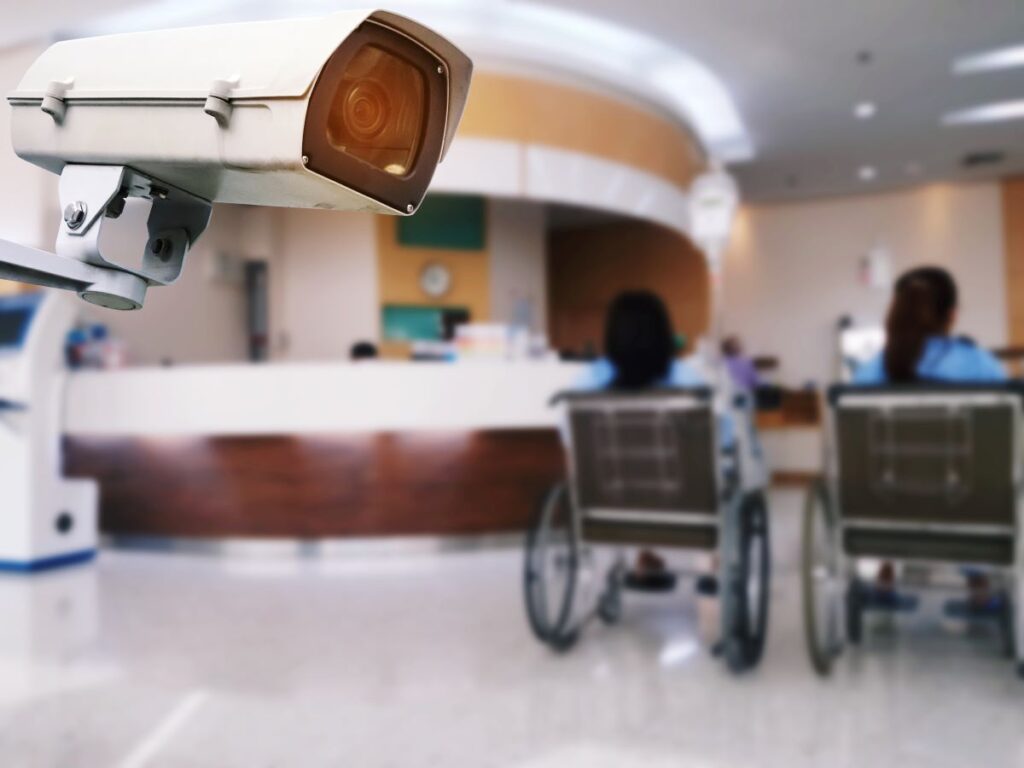
Many hospitals have security control rooms where trained personnel monitor camera feeds around the clock. Larger hospitals with significant public traffic often have full-time monitoring, while smaller facilities may rely on recorded footage reviewed after incidents.
The Role of Hospital Security Cameras in Patient Privacy
Balancing security and privacy is a key challenge in healthcare. Here’s how hospitals ensure both:
- Cameras avoid private areas like bathrooms or patient exam rooms
- Footage access is restricted to authorized security personnel
- Signs inform staff and visitors about video surveillance
- Hospitals comply with privacy laws like HIPAA
- Cameras focus on entrances, hallways, and public spaces
Technological Trends in Hospital Cameras
Modern hospital surveillance is evolving with:
- High-Definition (HD) Cameras: Clearer images for better identification
- Infrared Night Vision: Effective monitoring in low-light areas
- AI-Powered Analytics: Detect unusual activity automatically
- Integration with Access Control: Cameras linked to badge entry systems
- Remote Monitoring: Security staff can view footage on mobile devices
FAQs
1. Are hospital cameras always recording?
Yes, in most hospitals, cameras record continuously, especially in public areas like entrances, hallways, and parking lots for security and incident review purposes.
2. Can hospital cameras see inside patient rooms?
Generally, no. Cameras are not installed inside private patient rooms to respect privacy laws unless medically necessary or legally permitted for security reasons.
3. Do hospital cameras work at night?
Yes, many hospital cameras have infrared night vision or low-light capabilities, allowing them to monitor areas effectively, even in complete darkness.
4. Who can view hospital camera footage?
Only authorized hospital security personnel or law enforcement can access camera footage. Access is strictly controlled to protect privacy and security.
5. Are there hidden cameras in hospitals?
Hidden cameras may be used in rare cases for investigations, but their use is limited, strictly regulated, and always complies with privacy and legal standards.
Conclusion:
Hospital cameras play a vital role in ensuring security while respecting patient privacy. These cameras come in various forms, including dome, bullet, PTZ, and hidden models, each designed for specific areas within the hospital. Whether monitoring entrances, hallways, or parking lots, they help deter crime, improve safety, and provide peace of mind. Hospitals take care to balance surveillance with strict privacy protections, ensuring that patients, visitors, and staff are safe without compromising confidentiality.

